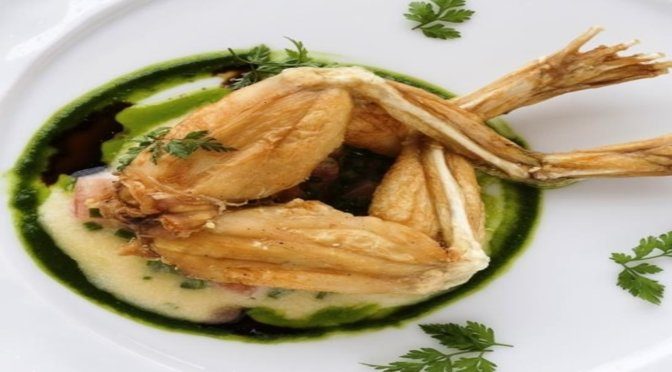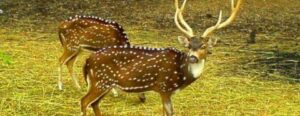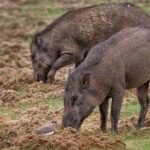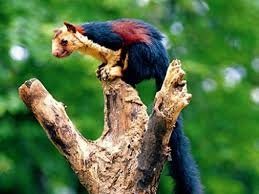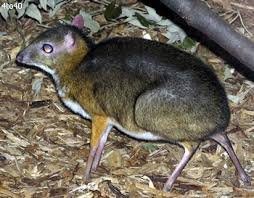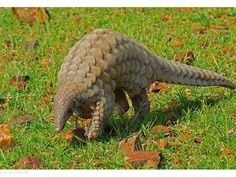Goa has a huge forest cover which houses a variety of wild animals, big and small. Many of these wild animals are hunted down for various reasons. Wild animals like Meru (cervous unicolor), Pisay (mouse deer), Bhekare (barking deer) and animals like Shekaro (Malabar Giant Squirrel) and Sheryo (Pangoline) are not spared by the hunters for their meat to even the oil of carcasses. Read about the different reasons these animals are used for.
Poaching of endangered species
Monitor Lizard:
Monitor lizard is a Schedule I wild animal which is poached for obtaining its meat and mainly for the skin. Some species are found in Goa. Its meat, particularly the tongue and liver is eaten in parts of Southern India and Malaysia as an alleged aphrodisiac. 
In parts of Pakistan, different parts of monitor lizards are used for a variety of medical purposes. The flesh is eaten for the relief of rheumatic pain, abdominal fat is used as a salve for skin infections, oil and fat are used to treat hemorrhoids or chronic pain, and the oil is used as an aphrodisiac lubricant (saande kaa tel).
Dried skin of the monitor lizard is used in the making of the ‘Ghumat’ a percussion instrument used in folk music especially in Goa.
Konge (Snails):
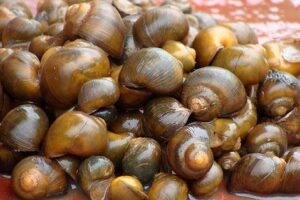
These snails are nutritious and rich in minerals. Coastal residents are known for making a variety of dishes with snails. The elderly believe that eating snails will relieve them of constant back pain.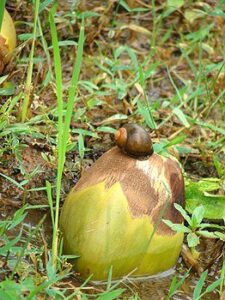
Snails are in great demand in the city markets because city folks prefer it to shellfish sourced from the Arabian Sea and rivulets of Netravati River as it is harvested only during the monsoon season. They are very expensive due to the fishing ban.
Frog Legs:
Frog legs or ‘jumping chicken’ are a delicacy. The dish is also known to have medicinal qualities. Prepared in multiple ways, it is believed that frog legs can cure various stomach-related diseases.
Baby Shark Curry:
In the waters of Goa, one of the most impressive sights is the baby shark (Pilo). The same baby shark is a star dish of Goan cuisine – they make a curry out of it. This dish is prepared using different sauces. Baby sharks don’t come cheap since the fishermen put in a lot of effort to catch them.
Deer and Wild Boar:
Mouse deer’s, Barking deer’s, Spotted deer’s, wild boars are all found deep in Goan forests bordering some villages. The discovery of these animals has led to leisure sport turning into a lucrative source of livelihood for many. Besides, these are hunted for their meat which is highly priced.
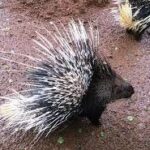 Porcupine
Porcupine
Peacock
Peacock, the National bird of India, usually gets poached for its meat, feathers and for the oil that is extracted from its carcass as an aphrodisiac.
Survival of the fittest? No, it’s not so as these wild animals are hunted for their meat or skin by ruthless poachers.
Destruction of natural habitat of most wild animals happens due to encroachment. Despite the Wildlife Protection Act in Goa which protects wild animals, there still remains the need to enforce its directives. Hunting wild animals affect the ecological balance. Bigger carnivorous animals like leopards get deprived of their prey, resulting in man-animal conflicts. Therefore, carnivores hunting for smaller animals get forced to source food from ‘human-inhabited’ territory in order to stay alive.
Even the mouse deer, pangolin, and giant squirrel are not spared. These four-legged friends frequent our forest covers. There is a need to protect their habitat, which is shrinking. Besides, awareness about the importance of wildlife in the ecological balance should be created.

